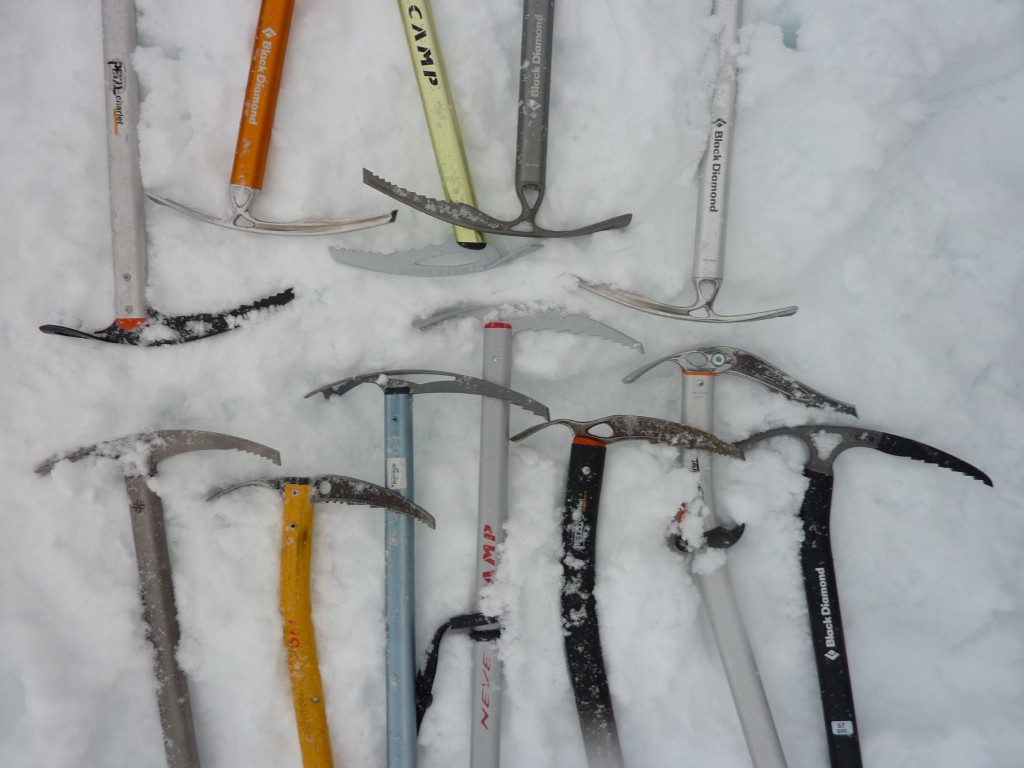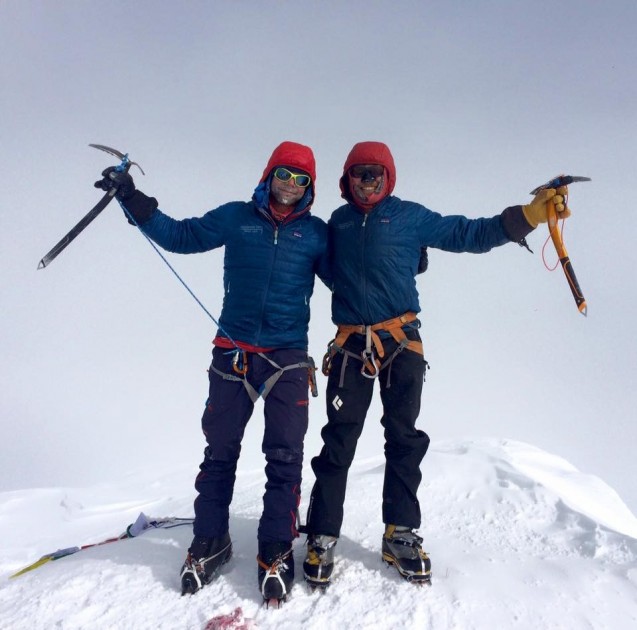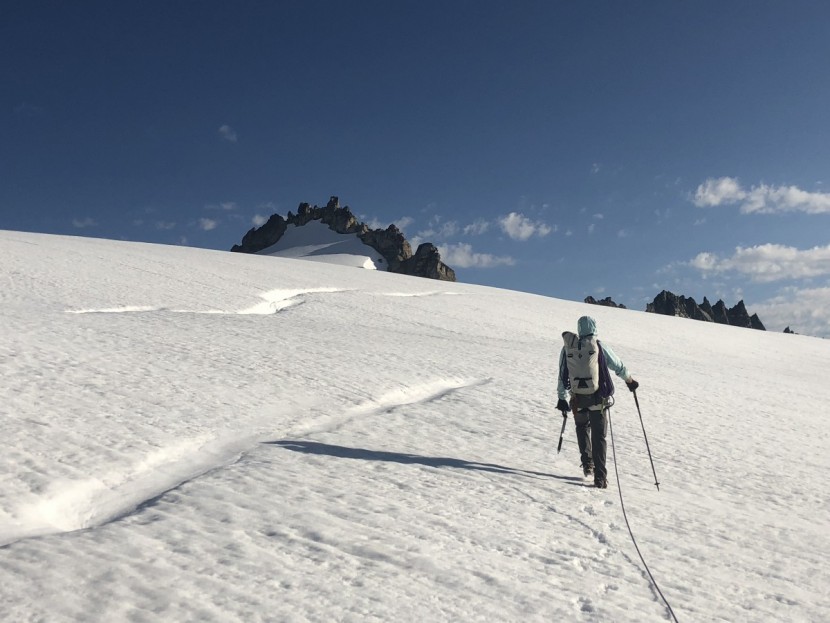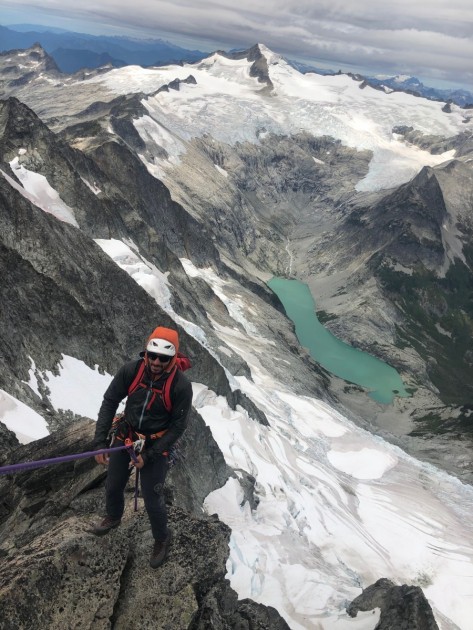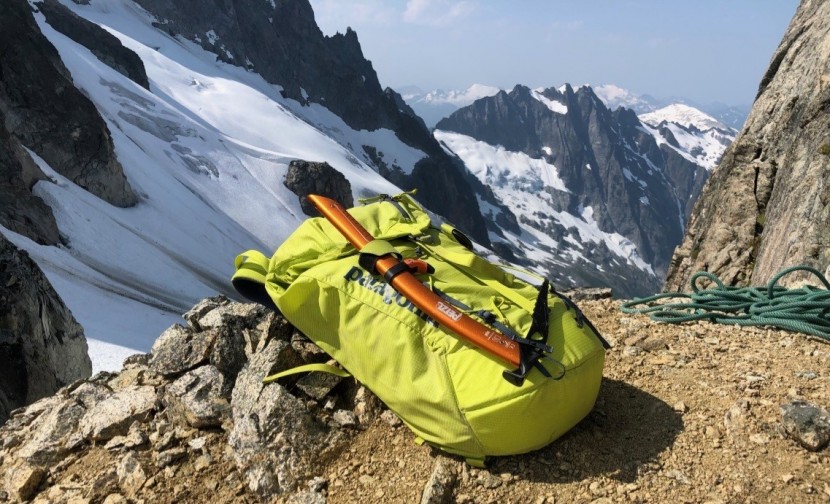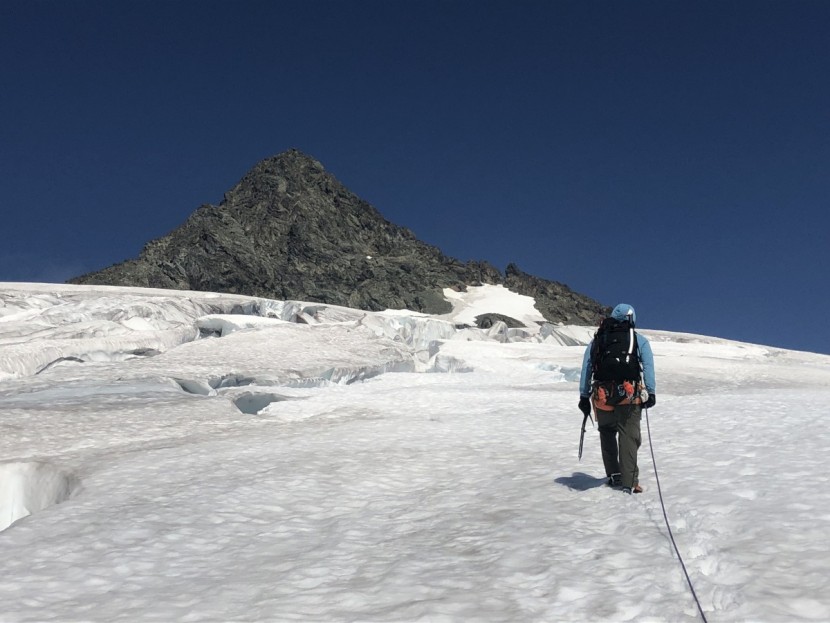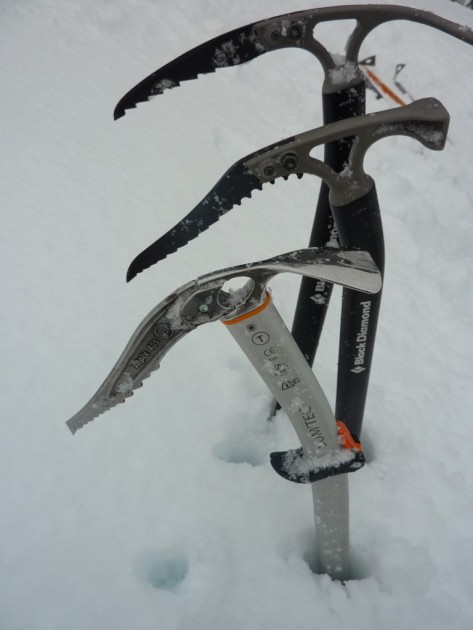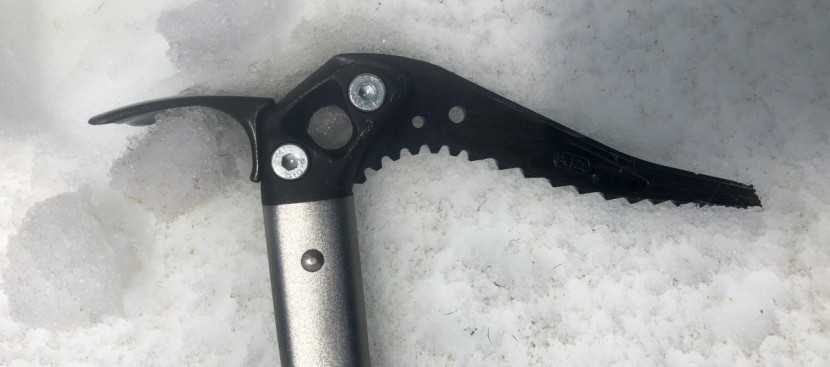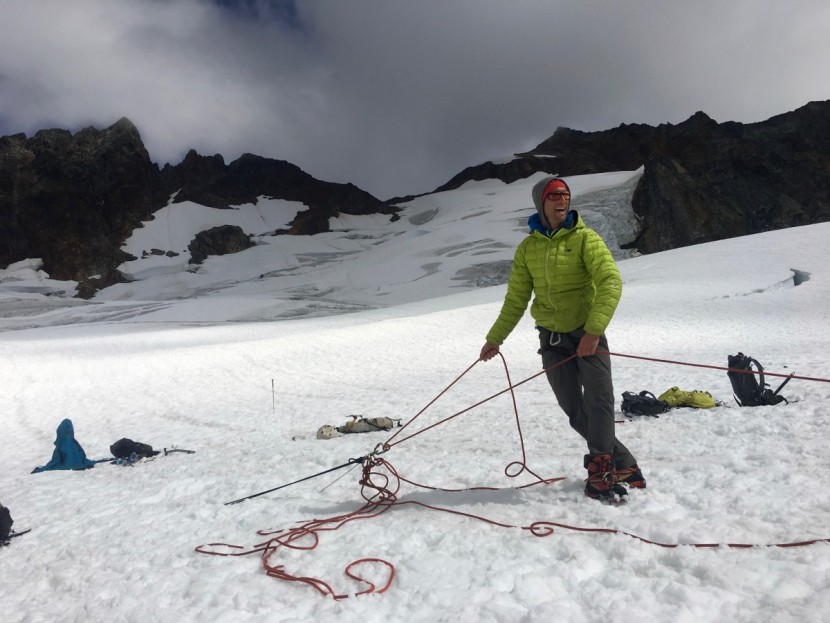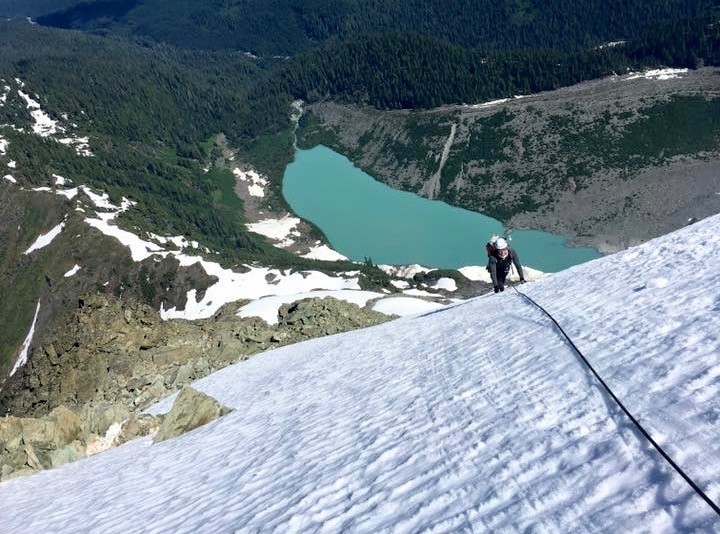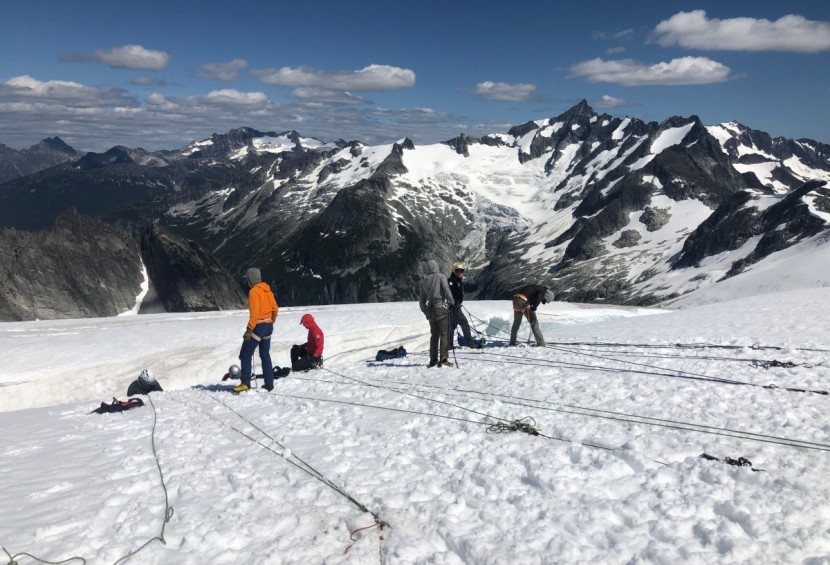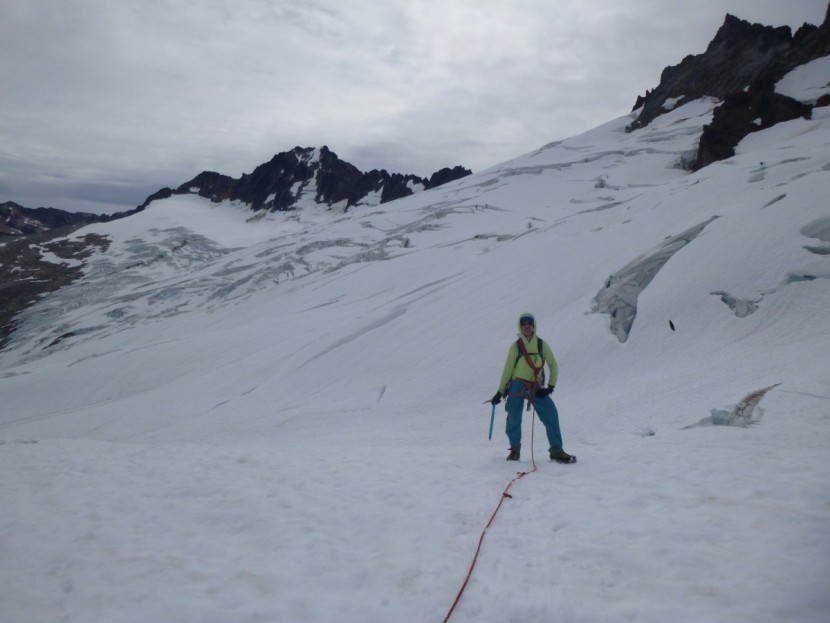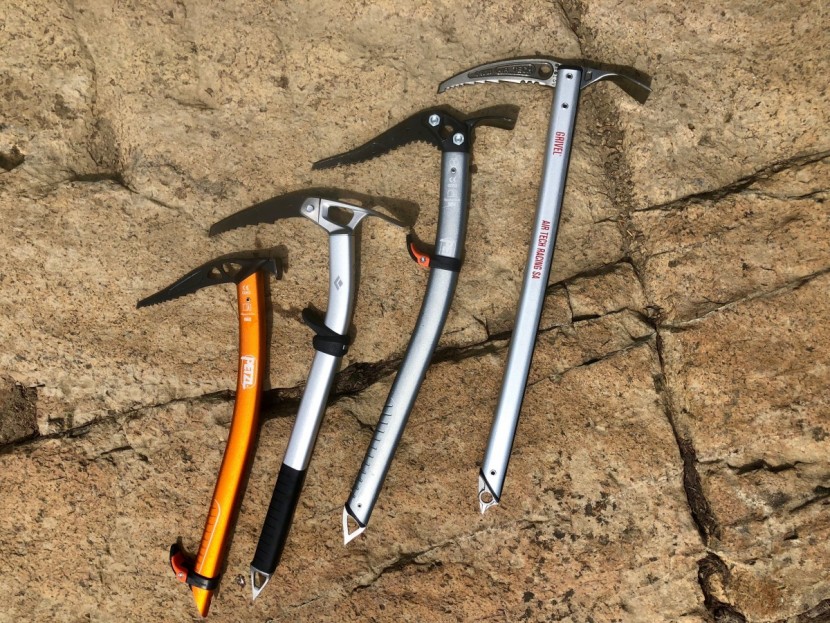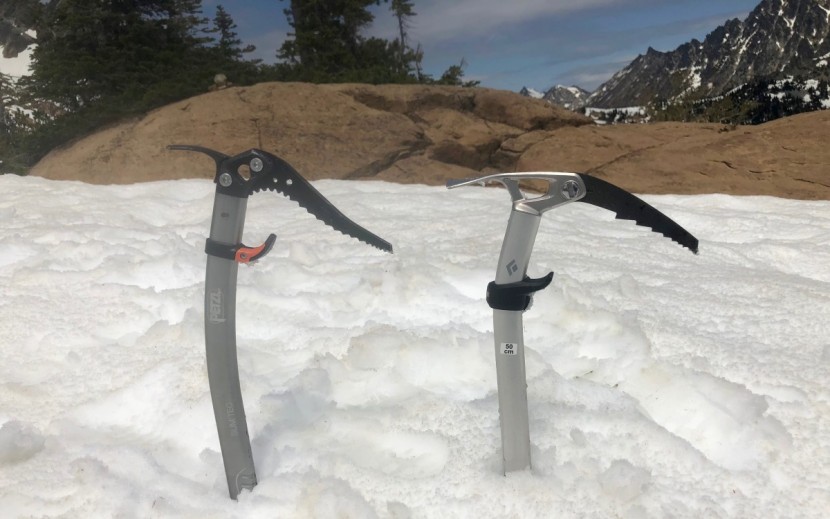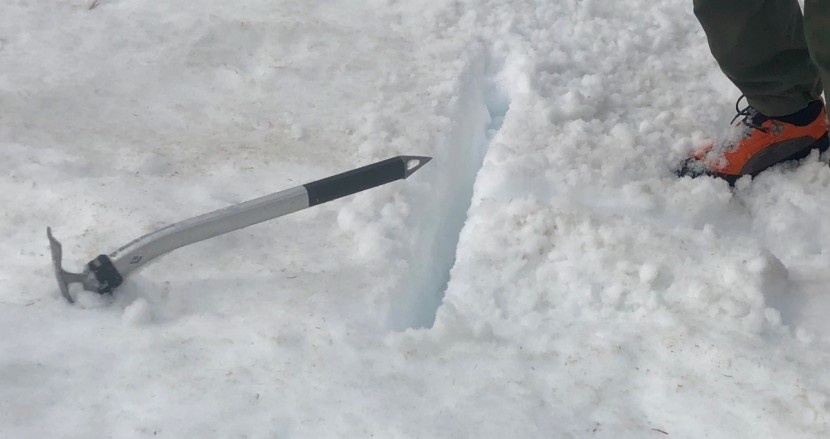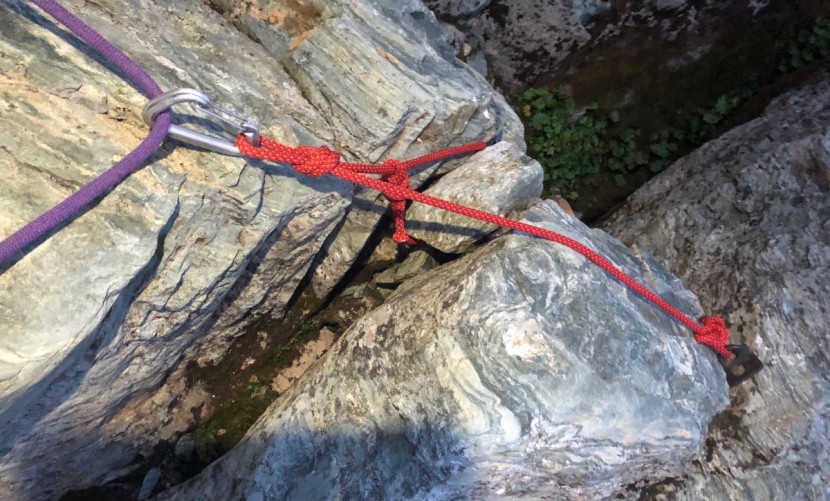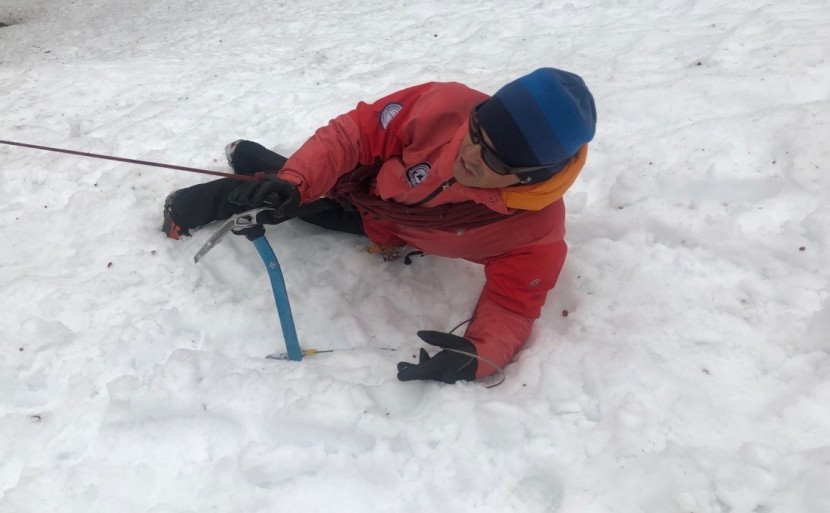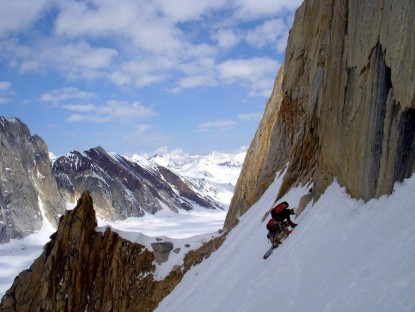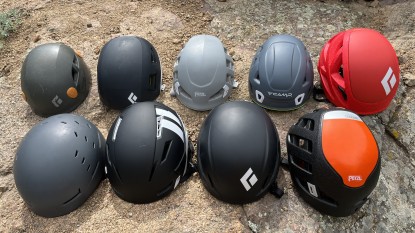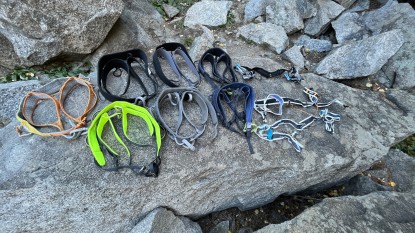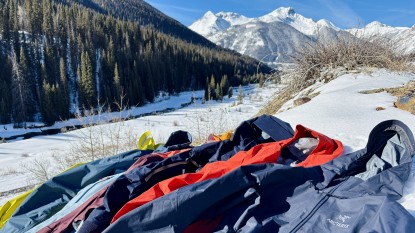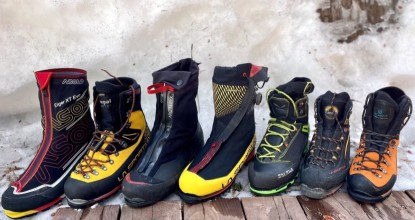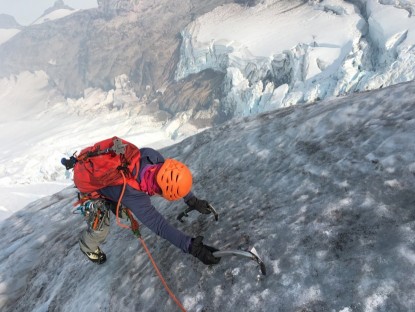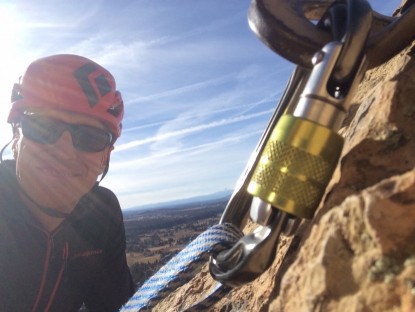Do You Need an Ice Axe
How do you choose the best ice axe for your needs? Whether you are looking for an ultralight model for ski mountaineering, one with a modular head for steeper snow routes and complex glacier climbs, or a solid all-arounder to handle the full gambit of routes and conditions, we highlight some key factors to consider below.
Length
While it is decreasing with time all too often, we see people with ice axes that are too long for them. Axes that are too long (relative to a person's height) present a problem; however, running a little on the shorter side is rarely, if ever, a big deal.
Somehow the mantra “the absolute longest an ice axe should be is that the spike hits your ankle” is occasionally twisted into “the spike should hit your ankle,” and a distinction should be noted. There is a common misperception that climber should want their spike to touch the ground while walking in lower angle or flat terrain while using their axe like a cane. Instead, most climbers SHOULD aim for the spike to touch the ground in terrain that is 25-40 degrees where you actually want a third point of contact to increase stability.
The problem with a model that works better in flatter or lower angle terrain is it is too long in steeper terrain as it raises the climber's center of balance and makes it less useful for increasing stability. Not only do you have performance in lower angle terrain where you don't need it, but you would be better off using a trekking pole. A model that is too long hinders use in steeper terrain where you actually want to use it.
For example, if you are traversing a steeper slope where you need a third point of contact, your axe should be in your uphill hand. If your axe is too long, your hand will be too high to effectively increase your stability. Shorter models also pack nicer for ski-mountaineering, early-season backpacking, and alpine rock climbing, where 60cm should be a maximum length for even the tallest users. Typically, 45-50cm in length is ideal.
Sizing Guidelines for Classic Mountaineering Axes
Under 5'6": 45-50cm
5'6" to 5'8": 50-55cm
5'9" to 6'0": 50-60cm
6'1" to 6'4": 50-65cm
Over 6'4": 60-70cm
Pick Shapes
Positive Curve (AKA Classic Curve)
Most general mountaineering axes use a positive curve pick, also sometimes called a classic curve; this is where the pick makes a slight downward arching curve downward. This design is popular because it strikes an excellent balance of steep snow performance and self-arresting. Positive curve designs self-arrest nearly as well as a neutral curved model but climb steeper snow and ice FAR more securely. When swung into higher angle ice, it doesn't clean as easily as a reverse curve design.
Neutral Curve
A neutral curve is exactly like it sounds: the pick comes straight out from the head of the shaft with no droop. A neutral curve pick is the best for self-arresting as it is as smooth as they get for this application but are far less secure when swung into the ice. (An example is a Grivel Pamir). Nowadays, there are very few models with a true neutral curve pick. We used to feature a handful of them in our review but currently don't have any.
Reverse Curve (Reverse Positive)
A reverse curve pick is best for climbing ice and steeper snow. This design starts trending down like a positive curve, but commonly at an increased angle, then curves the other way back up. This shape makes removing the pick from ice far easier after it has been driven in. The disadvantage is models with this design are the least “smooth” of the three when self-arresting and give the climber a “bumpy” feeling stop. We are not saying that you can't or shouldn't be self-arresting with a reverse curve pick; it's just not ideal. An example is a Petzl Sum'Tec, or any ice-tool geared towards winter waterfall ice climbing.
B versus T ratings
The CEN-B (basic) and CEN-T (technical) ratings are based on six tests to the shaft and pick that are supposed to mimic the action of climbing and any potential forces applied to the tool. For example, a B rating from the shaft in a way the mimics a Deadman T-slot anchor to 280kg and a T rating needs to be able to withstand 400kg. A trend is B and T ratings are now being more commonly referred to as UIAA Type 1 (CEN-B) or Type 2 (CEN-T). While the names are different, these two ratings have more or less the same tests and strength requirements as the CEN-B/T tests.
For an axe to be CEN-T or Type 2 rated model, it must pass all six tests to both a T rated pick and shaft. If it only gets a T rating in one category, then it gets the B rating overall. Some axes, especially those with modular picks, will show a rating on both the shaft and their pick. This is because your axe could be B or T rated depending on your pick selection. For example, Petzl Sum'Tec has a T-rated shaft and a B-rated pick that results in a B-rated ice axe. Do you need a T-rated axe for general mountaineering? Certainly not. Do you need one for harder alpine routes? Not necessarily, a T-rated axe will just be stronger.
Materials
Steel
Steel is the most popular metal for heads and picks used in manufacturing today. It is the most durable but also the heaviest metal used. Steel is easily the best for more involved alpine objectives where pounding pickets, chopping steps, and penetrating firm ice might be required. It also allows more effective self-arresting and better performance while swinging into firmer snow and neve. While titanium is stronger than steel, it is actually softer and thus bends more easily. Steel is only slightly more durable than titanium; because of this, steel picks are better suited to ice and mixed routes.
Aluminum
Aluminum is lighter than steel or titanium; that alone is a reason to use it in certain situations. However, it won't stand up to abuse like titanium or steel. It is best for ski mountaineering, adventure racing, and early season backpacking, where you won't be climbing a lot of steeper snow and ice or pounding a lot of pickets. Aluminum is best for “lighter duty” applications such as early-season backpacking trips.
Titanium
Titanium is lighter than steel and heavier than aluminum. Titanium is stronger metal than steel, but it is also slightly softer and thus is easier to bend but won't break or shatter like aluminum. Titanium has nearly all the same applications as steel unless the user is particularly hard on their ice axe. We've reviewed titanium models in the past, but there aren't any currently in our review. Titanium models work great from a performance standpoint, but they are typically only marginally lighter, but as the material is more costly, they end up being significantly more expensive.
Curve in the Shaft
While a curved shaft in more traditional all-around mountaineering axes used to be unusual, it has become more common over the last 4-6 years, and now roughly half the models in our review feature a curved shaft to some extent. Its primary advantage is a curved shaft gives better clearance when swinging an ice axe (Piolet Traxion) into ice, with the climber's hand on the lower portion of the shaft. This curve is also useful when climbing steep ice or climbing in and out of crevasses or pulling bergschrunds. It keeps your hands warmer and drier by keeping them out of the snow while in Piolet Mache (mid dagger, hands on the shaft below the pick, useful for snow 45-60 degrees).
One surprise we discovered in our tests was that curved shafts increased the stopping power of most ice axes while self-arresting. Every tester noted the increased leaver gained with a curved shaft driving the pick into the snow with a curved design over a straight one. The only real downside of these models is that the curved shaft is marginally harder to drive into the snow when using it as a vertically-oriented deadman or plunging it vertically to pull a bulge. We feel the upsides far outweigh the downs, and in general, our testers preferred curved-shafted models over straight-shafted ones.
Modular Ice Axes
Modular options continue to gain in popularity, particularly as they've gotten lighter and lighter and are close in weight to more technical models with fixed heads. The advantage of a modular pick is when one pick wears out, you can replace it, or you can change between picks; often, a positive or reversed curve adds to a model's overall versatility depending on the requirements of a given route. Modular models often excel for more technical routes and complex glacier climbs but are overkill for more modest objectives, ski-mountaineering, or early season snow climbs.
The Adze
Climbers and mountaineers often don't consider the adze in an ice axe comparison. But when alpine climbing, your adze allows you to dig a snow anchor or a snow cave, and even chop a tent platform out of the hardest ice. It is probably the only tool that allows you to dig a snow bollard, something most climbers rarely do.
Hammer
Should you go hammer or adze? Depending on the objective or the time of year, one may be more useful than the other. For earlier season glacier climbs and steep snow routes, an adze is preferred as it is FAR easier to dig T-trenches and deadman, and you can still pound a picket vertically with the head of your axe.
For late-season glacier climbs, a hammer can certainly be nice; this is because nearly all the pickets you place will be vertical, and a hammer is not only easier than an adze to place in this orientation, but the odds of having to dig a T-trench type anchor are low. The other advantage late season is this is the most frequent time of year climbers have to place pitons to rappel to get back over funky moats and other strange features. An adze is still more versatile if you are only going to have one, but a hammer isn't much less versatile.
Do I Need a Spike?
A spike is useful when using the ice axe as a third point of contact while walking on a firmer surface. (If the snow is soft, then a spike doesn't matter as much.) Another benefit of a spike is it helps the axe penetrate more easily into the snow when using the axe as a vertically-oriented snow anchor. If you are someone who climbs a lot of glacier routes, then a spike bites the bare ice much better. For adventure racers, backpackers, or ski mountaineers, a spike is less essential because you are usually in softer snow. Spike-less axes are often shorter because they are rarely used as a cane.

